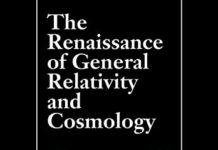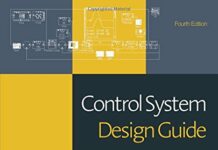
Ebook Info
- Published: 2002
- Number of pages: 259 pages
- Format: PDF
- File Size: 5.50 MB
- Authors: George Ellis
Description
Observers are digital algorithms that combine sensor outputs with knowledge of the system to provide results superior to traditional structures, which rely wholly on sensors. Observers have been used in selected industries for years, but most books explain them with complex mathematics. Observers in Control Systems uses intuitive discussion, software experiments, and supporting analysis to explain the advantages and disadvantages of observers. If you are working in controls and want to improve your control systems, observers could be the technology you need and this book will give you a clear, thorough explanation of how they work and how to use them.Control systems and devices have become the most essential part of nearly all mechanical systems, machines, devices and manufacturing systems throughout the world. Increasingly the efficiency of production, the reliability of output and increased energy savings are a direct result of the quality and deployment of the control system. A modern and essential tool within the engineer’s kit is the Observer which helps improve the performance and reduce the cost of these systems.George Ellis is the author of the highly successful Control System Design Guide (Second Edition). Unlike most controls books, which are written by control theorists and academics, Ellis is a leading engineer, designer, author and lecturer working in industry directly with the users of industrial motion control systems. Observers in Control Systems is written for all professional engineers and is designed to be utilized without an in-depth background in control theory. This is a “real-world” book which will demonstrate how observers work and how they can improve your control system. It also shows how observers operate when conditions are not ideal and teaches the reader how to quickly tune an observer in a working system.Software Available online: A free updated and enhanced version of the author’s popular Visual ModelQ allows the reader to practice the concepts with Visual ModelQ models on a PC. Based on a virtual laboratory, all key topics are demonstrated with more than twenty control system models. The models are written in Visual ModelQ ,and are available on the Internet to every reader with a PC.
User’s Reviews
Editorial Reviews: From the Back Cover Observers are digital algorithms that combine sensor outputs with knowledge of the system to provide results superior to traditional structures, which rely wholly on sensors. Observers have been used in selected industries for years, but most books explain them with complex mathematics. This book uses intuitive discussion, software experiments, and supporting analysis to explain the advantages and disadvantages of observers. If you are working in controls and want to improve your control systems, observers could be the technology you need and this book will give you a clear, thorough explanation of how they work and how to use them.Control systems and devices have become the most essential part of nearly all mechanical systems, machines, devices and manufacturing systems throughout the world. Increasingly the efficiency of production, the reliability of output and increased energy savings are a direct result of the quality and deployment of the control system. A modern and essential tool within the engineer’s kit is the Observer which helps improve the performance and reduce the cost of these systems. George Ellis is the author of the highly successful Control System Design Guide (2nd Edition). Unlike most controls books, which are written by control theorists and academics, Ellis is a leading engineer, designer, author and lecturer working in industry directly with the users of industrial motion control systems. Observers in Control Systems is written for all professional engineers and is designed to be utilized without an in-depth background in control theory. This is a “real-world” book which will demonstrate how observers work and how they can improve your control system. It also shows how observers operate when conditions are not ideal and teaches the reader how to quickly tune an observer in a working system.Software Available on line: A free updated and enhanced version of the author’s popular Visual ModelQ allows the reader to practice the concepts with Visual ModelQ models on a PC. Based on a virtual laboratory, all key topics are demonstrated with more than twenty control system models. The models are written in Visual ModelQ ,and are available on the Internet to every reader with a PC. About the Author George Ellis has worked in product development for 35 years. He first experienced the concept of continuous improvement two decades ago through the Danaher Corporation, one of the world’s foremost lean thinking companies. Danaher transformed itself in the 1980s, modeling its Danaher Business System (DBS) on the Toyota Production System. Ellis has had numerous leadership roles at Danaher, including Vice President of Global Engineering for X-Rite from 2015 to 2018. In 2019, Ellis joined Envista Holdings Corporation, a new spin-off from Danaher for the dental industry, as Vice President of Innovation. There he spends every day immersed in lean knowledge work, deploying, improving, and sustaining new product development workflows in EBS, Envista’s brand of lean knowledge. He also wrote Project Management for Product Development, Control System Design Guide (4th edition), and Observers in Control Systems, all from Elsevier.
Reviews from Amazon users which were colected at the time this book was published on the website:
⭐This is the only book on observers that I have been able to stick with. The subject is covered in a very understandable way that allowed me to:1. Make it all the way through the book2. Apply what I learned in the real world3. Realize significant performance gains from the observer methods describedOutstanding!
⭐As he did with his Control System Design Guide, George Ellis has managed to take a key concept, the observer, and explain it in terms that the average, practicing, control engineer can understand, and better yet: Apply. If you believe that all you need to know can be desribed in classical control terms, then this book is for you. If you shun anything that refers to “modern control theory,” or “state space” then this book is for you. If you’ve always wanted to apply principles of modern control theory, but never figured out how to reduce it to practice, then this book is for you. If you’re frustrated by the fact that you’re colleagues eyes glaze over when you talk about “State Estimators,” then this book is for you. Or if you simply want to be the control engineer that takes one or more of your best control loops up another notch in performance, then this book is for you. In this book, George Ellis explains, in simple control terms, what an observer is and how it can be applied. Ellis, provides plenty of information for you to asses the risk/benefit of applying observers to a process, e.g., how good must your process/sensor model be for the observer to be effective (You’ll be surprised at how robust they are). Finally, Ellis provides many ready-to-run simulation examples, written in Visual Model-Q, a very powerful control system modeling environment. Visual Model-Q is in turn available to download at a great price: free!
⭐
Keywords
Free Download Observers in Control Systems: A Practical Guide 1st Edition in PDF format
Observers in Control Systems: A Practical Guide 1st Edition PDF Free Download
Download Observers in Control Systems: A Practical Guide 1st Edition 2002 PDF Free
Observers in Control Systems: A Practical Guide 1st Edition 2002 PDF Free Download
Download Observers in Control Systems: A Practical Guide 1st Edition PDF
Free Download Ebook Observers in Control Systems: A Practical Guide 1st Edition


